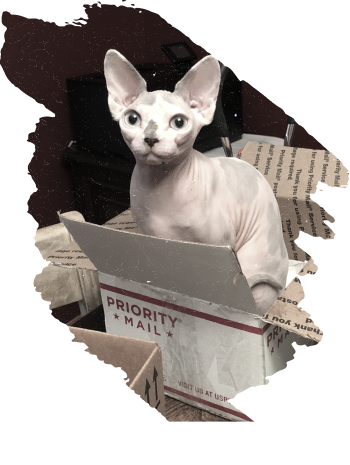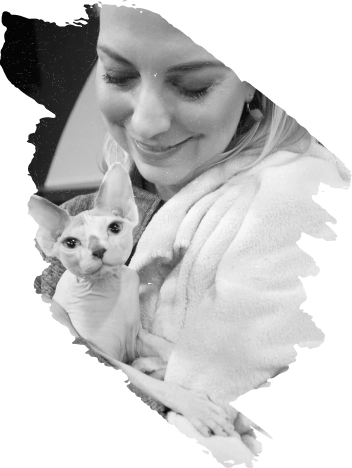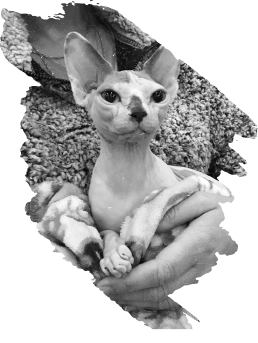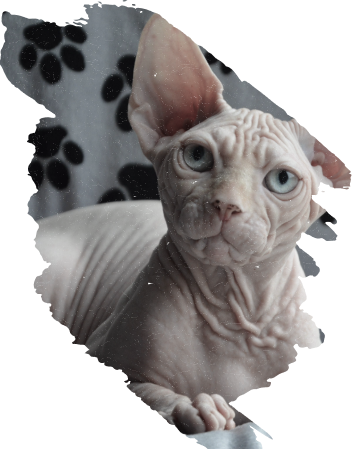
The Sphynx cat is a breed of cat known for its lack of coat (fur). Hairlessness in cats is a naturally occurring genetic mutation; however, the Sphynx cat, as a breed, was developed through selective breeding, starting in the 1960s. The skin should have the texture of chamois leather, as it has fine hairs, or the cat may be completely hairless. Whiskers may be present, either whole or broken, or may be totally absent. The cats have a narrow, long head and webbed feet. Their skin is the color that their fur would be, and all the usual cat markings (solid, point, van, tabby, tortie, etc.) may be found on the Sphynx cat’s skin. Because they have no fur they lose more body heat than coated cats which makes them warm to the touch and prone to finding warm places. Though Sphynx cats lack a coat to shed or groom, they are not maintenance-free. Body oils, which would normally be absorbed by the hair, tend to build up on the skin. Care should be taken to limit the Sphynx cat’s exposure to outdoor sunlight at length, as they can develop sunburn and skin damage similar to that of humans. In general, Sphynx cats should never be allowed outdoors unattended, as they have limited means to conserve body heat when it is cold. In some climates, owners provide coats or other clothing in the winter to help them conserve body heat.


